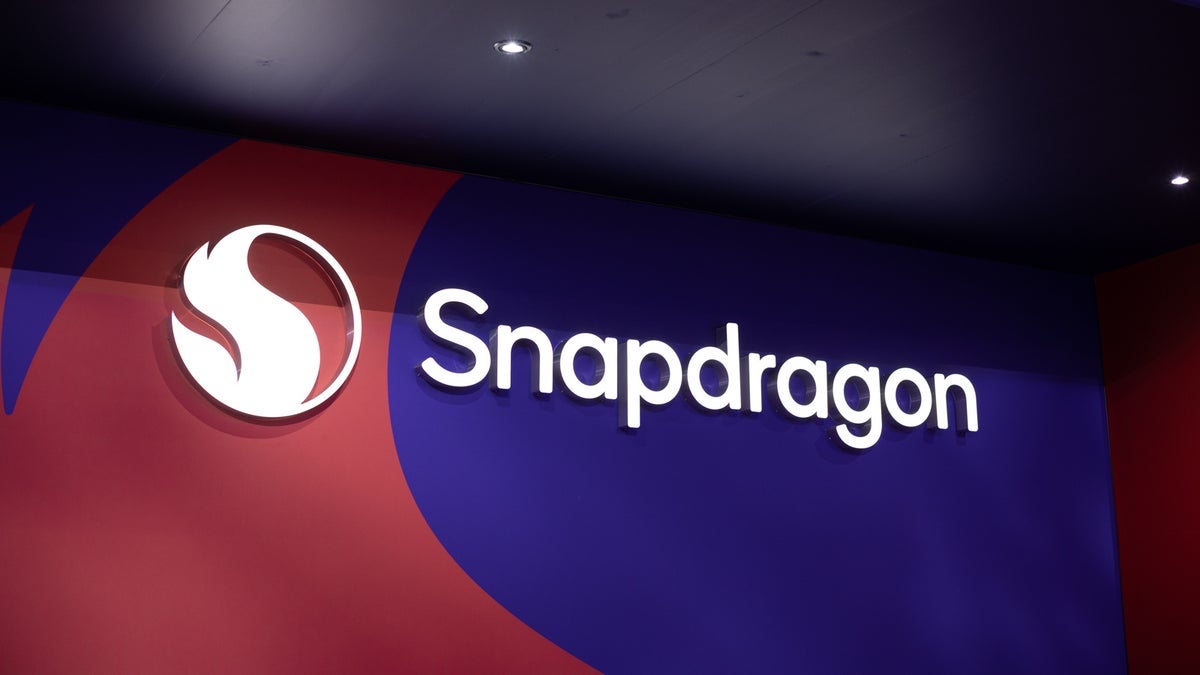Comprehensive Guide to Tracking Sponsorship Earnings and Beyond
Abstract: This post offers a deep dive into the methods, best practices, and broader implications of tracking sponsorship earnings. We explore a structured approach to developing sponsorship strategies, drafting robust agreements, and implementing modern tracking systems while ensuring legal and tax compliance. Additionally, the article delves into how these practices intersect with emerging trends in blockchain, NFT marketing, and open-source sustainability. With practical examples, tables, and curated resource links, this comprehensive guide is designed for businesses, influencers, event organizers, nonprofits, and technical experts alike. Introduction In today’s highly competitive ecosystem, managing sponsorship earnings has become a critical element of business sustainability. Whether you are a startup seeking funding, an influential content creator, or an open-source project looking to secure ongoing support, precise and transparent tracking of sponsorship revenues is paramount. This guide builds on the insights offered in the Comprehensive Guide to Tracking Sponsorship Earnings and expands the discussion to include modern trends such as blockchain for tax compliance, NFT marketing, and scalable digital funding solutions. Tracking sponsorship earnings not only drives informed decision-making and financial transparency but also builds trust with sponsors. By establishing structured processes and leveraging technological tools, organizations can ensure data accuracy, meet regulatory compliance, and foster long-lasting sponsorship relationships. Background and Context Historically, sponsorship earnings were tracked through manual spreadsheets and paper-based audits. With technological advancements and globalization, the methods have evolved significantly: Sponsorship Revenue Definition: Sponsorship earnings include payments or in-kind contributions received for events, projects, or campaigns. It encompasses both monetary funds and assets exchanged for brand visibility and support. Ecosystem Evolution: As brands become more digitally oriented, tracking systems now incorporate cloud-based accounting tools like QuickBooks and Xero. In addition, blockchain technology is increasingly being leveraged to provide transparency and audit trails, thereby minimizing fraud and enhancing compliance. Regulatory Frameworks: With growing emphasis on financial transparency, governmental bodies, such as the IRS, have introduced stricter regulations to ensure that sponsorship agreements adhere to tax and legal guidelines. For more comprehensive info on tax compliance, check out IRS guidelines for small businesses. These changes underscore the necessity for businesses to adopt a well-structured tracking system that not only meets current operational demands but also adapts to future challenges. Core Concepts and Features Understanding and implementing an effective sponsorship tracking system involves several core concepts and practices: 1. Developing a Sponsorship Strategy Before diving into the technical aspects, organizations must develop a clear sponsorship strategy. This includes: Objective Setting: Define what you aim to achieve—be it brand enhancement, revenue generation, or financial stability. Sponsor Compatibility: Identify and select sponsors whose values align with the organization’s mission. Success Metrics: Establish clear KPIs to measure the performance of sponsorship engagements. For strategic insights, refer to this Forbes article on securing sponsorship partners. 2. Drafting Detailed Sponsorship Agreements A robust agreement is the foundation of any sponsorship deal. These documents should clearly define: Deliverables: What each party is expected to provide. Payment Terms: Timeframes, payment methods, and conditions. Compliance Clauses: Provisions to meet legal and tax requirements. Legal resources and templates, such as those provided by the SBA, can guide organizations through the drafting process; see SBA’s contract preparation guidelines. 3. Setting Up a Tracking System Modern tracking systems leverage digital tools for enhanced accuracy: Accounting Software: Tools like QuickBooks and Xero streamline financial record-keeping. Automation & Custom Spreadsheets: Automate routine tasks for improved efficiency. Blockchain Integration: Emerging platforms incorporate blockchain to ensure immutable records and facilitate audit trails. Below is an example table summarizing some common tools and features: Tool/Platform Key Feature Use Case QuickBooks Real-time accounting & invoicing Small to medium-sized businesses Xero Cloud-based financial management Scalable solutions for diverse revenue streams Custom Spreadsheets (Excel/Google) Flexible data tracking and automation Tailored solutions for specific sponsorship needs Blockchain Platforms Immutable audit trails Enhanced transparency and fraud preventi

Abstract:
This post offers a deep dive into the methods, best practices, and broader implications of tracking sponsorship earnings. We explore a structured approach to developing sponsorship strategies, drafting robust agreements, and implementing modern tracking systems while ensuring legal and tax compliance. Additionally, the article delves into how these practices intersect with emerging trends in blockchain, NFT marketing, and open-source sustainability. With practical examples, tables, and curated resource links, this comprehensive guide is designed for businesses, influencers, event organizers, nonprofits, and technical experts alike.
Introduction
In today’s highly competitive ecosystem, managing sponsorship earnings has become a critical element of business sustainability. Whether you are a startup seeking funding, an influential content creator, or an open-source project looking to secure ongoing support, precise and transparent tracking of sponsorship revenues is paramount. This guide builds on the insights offered in the Comprehensive Guide to Tracking Sponsorship Earnings and expands the discussion to include modern trends such as blockchain for tax compliance, NFT marketing, and scalable digital funding solutions.
Tracking sponsorship earnings not only drives informed decision-making and financial transparency but also builds trust with sponsors. By establishing structured processes and leveraging technological tools, organizations can ensure data accuracy, meet regulatory compliance, and foster long-lasting sponsorship relationships.
Background and Context
Historically, sponsorship earnings were tracked through manual spreadsheets and paper-based audits. With technological advancements and globalization, the methods have evolved significantly:
- Sponsorship Revenue Definition: Sponsorship earnings include payments or in-kind contributions received for events, projects, or campaigns. It encompasses both monetary funds and assets exchanged for brand visibility and support.
- Ecosystem Evolution: As brands become more digitally oriented, tracking systems now incorporate cloud-based accounting tools like QuickBooks and Xero. In addition, blockchain technology is increasingly being leveraged to provide transparency and audit trails, thereby minimizing fraud and enhancing compliance.
- Regulatory Frameworks: With growing emphasis on financial transparency, governmental bodies, such as the IRS, have introduced stricter regulations to ensure that sponsorship agreements adhere to tax and legal guidelines. For more comprehensive info on tax compliance, check out IRS guidelines for small businesses.
These changes underscore the necessity for businesses to adopt a well-structured tracking system that not only meets current operational demands but also adapts to future challenges.
Core Concepts and Features
Understanding and implementing an effective sponsorship tracking system involves several core concepts and practices:
1. Developing a Sponsorship Strategy
Before diving into the technical aspects, organizations must develop a clear sponsorship strategy. This includes:
- Objective Setting: Define what you aim to achieve—be it brand enhancement, revenue generation, or financial stability.
- Sponsor Compatibility: Identify and select sponsors whose values align with the organization’s mission.
- Success Metrics: Establish clear KPIs to measure the performance of sponsorship engagements.
For strategic insights, refer to this Forbes article on securing sponsorship partners.
2. Drafting Detailed Sponsorship Agreements
A robust agreement is the foundation of any sponsorship deal. These documents should clearly define:
- Deliverables: What each party is expected to provide.
- Payment Terms: Timeframes, payment methods, and conditions.
- Compliance Clauses: Provisions to meet legal and tax requirements.
Legal resources and templates, such as those provided by the SBA, can guide organizations through the drafting process; see SBA’s contract preparation guidelines.
3. Setting Up a Tracking System
Modern tracking systems leverage digital tools for enhanced accuracy:
- Accounting Software: Tools like QuickBooks and Xero streamline financial record-keeping.
- Automation & Custom Spreadsheets: Automate routine tasks for improved efficiency.
- Blockchain Integration: Emerging platforms incorporate blockchain to ensure immutable records and facilitate audit trails.
Below is an example table summarizing some common tools and features:
| Tool/Platform | Key Feature | Use Case |
|---|---|---|
| QuickBooks | Real-time accounting & invoicing | Small to medium-sized businesses |
| Xero | Cloud-based financial management | Scalable solutions for diverse revenue streams |
| Custom Spreadsheets (Excel/Google) | Flexible data tracking and automation | Tailored solutions for specific sponsorship needs |
| Blockchain Platforms | Immutable audit trails | Enhanced transparency and fraud prevention |
4. Monitoring, Reporting, and Compliance
Regular assessments help in refining the tracking system. Key practices include:
- Routine Reviews: Monthly or quarterly financial reviews help recalibrate the tracking processes.
- Report Generation: Transform raw data into actionable insights and comprehensive reports for stakeholders—see this Investopedia guide on financial statements.
- Legal & Tax Compliance: Engage tax professionals to ensure your system aligns with regulatory frameworks.
5. Best Practices and Innovative Approaches
Successful sponsorship tracking hinges on a few best practices:
- Transparency with Sponsors: Provide regular updates to build trust and foster long-term relationships.
- Continual Automation: Leverage the latest technology to reduce manual errors.
- Feedback Loops: Use sponsor feedback to fine-tune strategies.
- Staff Training: Ensure team members are proficient in modern tracking tools.
- Scalability: Design systems that can grow with your organization.
A quick bullet list of actionable best practices:
- Maintain accurate records consistently.
- Utilize automation to reduce workload.
- Engage with sponsors through regular updates.
- Schedule periodic financial audits.
- Plan ahead for scalability and future growth.
Applications and Use Cases
Let’s consider a few practical examples where effective sponsorship earnings tracking is critical:
Use Case 1: Influencer Marketing and Social Media Campaigns
Influencers often receive sponsorship funds to promote brands. By integrating dedicated tracking systems:
- Earnings Transparency: Influencers can maintain detailed records which build trust with sponsors.
- Informed Negotiations: Data-driven insights empower influencers to negotiate better contracts.
- Digital Integration: Combining accounting software with blockchain ensures quick audits and proper tax reporting.
Use Case 2: Event Sponsorships
Event organizers face the dual challenge of managing multiple sponsorship deals concurrently. A robust tracking framework assists by:
- Centralized Data: Consolidate sponsorship earnings and deliverables in one central system.
- Regular Reporting: Generate event-specific reports for sponsors to highlight performance.
- Compliance Assurance: Use blockchain solutions to ensure every transaction is secure and verifiable.
Use Case 3: Open-Source Projects and Developer Sponsorship
Open-source projects increasingly rely on sponsorships:
- Project Funding: Transparency helps sustain long-term funding and fosters community trust.
- NFT and Tokenization Integration: Link sponsorship revenues with tokenized rewards, echoed by trends in NFT marketing and open source sustainability.
- Security Compliance: Tracking systems also document contributions and earnings to ensure legal adherence and prevent tax issues.
Challenges and Limitations
Despite the numerous benefits, tracking sponsorship earnings is not without challenges:
- Manual Data Entry Errors: Relying solely on human inputs can lead to inaccuracies.
- Integration Complexity: Merging different software systems and blockchain platforms demands significant technical expertise.
- Regulatory Variability: Different regions have varying compliance requirements that complicate financial reporting.
- Resource Allocation: Smaller organizations may struggle with investing in sophisticated automated systems and training staff.
- Scalability Concerns: As organizations grow, their tracking systems must also evolve to handle increasing complexity.
Researchers and practitioners continue to explore solutions to these challenges. For perspectives on technical best practices in coding and system integration, check out this Dev.to post on coding best practices.
Future Outlook and Innovations
Looking ahead, several trends promise to revolutionize the way sponsorship earnings are tracked:
- Blockchain Advancements: Increased adoption of blockchain can offer secure, tamper-proof transaction logs and simplify audit processes. For more on blockchain’s role in financial transparency, see Blockchain and Digital Signatures: A New Era of Security.
- AI and Automation: Artificial intelligence will drive smarter automation, reducing manual interventions and predicting trends based on historical data.
- Integration with NFT Platforms: NFT technology and tokenization are opening new avenues for sponsorship rewards and community funding, as discussed in The Role of NFTs in Open Source Rewards.
- Enhanced Regulatory Compliance: Future platforms will likely integrate compliance checks in real-time, ensuring immediate error correction in multi-jurisdictional environments.
- Open Source Funding Paradigm: With more open-source projects embracing tokenization and innovative funding, tracking systems must evolve to support these decentralized methods. For insights into blockchain-based funding, refer to Blockchain for Open Source Funding: A New Paradigm.
Additional Resources and Related Topics
For further reading and to deepen your understanding, check out these useful resources on related topics:
- GitHub Sponsors and Privacy: Explore how platforms handle earnings and privacy issues with GitHub Sponsors and Privacy.
- Blockchain and Tax Compliance: An essential read on legal and compliance issues is available at Blockchain and Tax Compliance.
- Sustainability Through Tokenization: Learn how open source projects can sustain themselves with tokenization strategies at Sustainability of Open Source Through Tokenization.
- NFT Marketing Trends: For insights into the rapidly evolving world of NFTs, consider What Is NFT Marketing.
From another perspective, these Dev.to posts provide valuable insights:
- Blockchain and Digital Signatures: A New Era of Security
- Elevate Your Software: The Importance of Coding Best Practices
- Blockchain for Open Source Funding: A New Paradigm
Conclusion and Summary
Efficiently tracking sponsorship earnings is much more than a bookkeeping exercise—it is a critical component of strategic planning, compliance, and relationship management. By developing clear strategies, drafting robust agreements, and employing modern digital tools like cloud software and blockchain, organizations can not only secure and verify revenues but also leverage data insights for growth.
This guide has covered:
- The evolution and importance of sponsorship tracking in the digital era.
- Core processes and tools for setting up effective tracking systems.
- Practical use cases spanning influencer marketing, event sponsorships, and open-source projects.
- The challenges and limitations encountered when scaling and integrating these systems.
- Future trends and emerging innovations—including blockchain integration, AI automation, and NFT-related funding—that promise to drive further efficiencies.
Ultimately, whether you are just starting your sponsorship journey or seeking to refine an existing system, the strategies and resources outlined in this guide provide a roadmap for creating a secure, transparent, and scalable tracking system. Embracing these practices will allow you to build trust with sponsors, navigate regulatory complexities, and harness the power of technology to drive sustainable growth.
By integrating the core principles of sponsorship strategy with modern financial technologies, you lay a solid foundation not only for immediate revenue tracking but also for long-term innovation and community engagement. Remember, as the digital landscape evolves, staying informed and agile is key to sustaining and optimizing your sponsorship earnings.
Embrace these strategies, leverage the right tools, and continuously review and refine your systems to ensure maximum impact, transparency, and growth in your sponsorship initiatives.
Whether you are an established organization or embarking on a new venture, this comprehensive guide serves as a technical yet accessible resource to help navigate the intricate world of sponsorship earnings tracking. Happy tracking and may your sponsorship revenue propel your vision to new heights!





































































































































































![[The AI Show Episode 145]: OpenAI Releases o3 and o4-mini, AI Is Causing “Quiet Layoffs,” Executive Order on Youth AI Education & GPT-4o’s Controversial Update](https://www.marketingaiinstitute.com/hubfs/ep%20145%20cover.png)




























































































































![[DEALS] Microsoft 365: 1-Year Subscription (Family/Up to 6 Users) (23% off) & Other Deals Up To 98% Off – Offers End Soon!](https://www.javacodegeeks.com/wp-content/uploads/2012/12/jcg-logo.jpg)




![From Art School Drop-out to Microsoft Engineer with Shashi Lo [Podcast #170]](https://cdn.hashnode.com/res/hashnode/image/upload/v1746203291209/439bf16b-c820-4fe8-b69e-94d80533b2df.png?#)




















![Re-designing a Git/development workflow with best practices [closed]](https://i.postimg.cc/tRvBYcrt/branching-example.jpg)




















































































(1).jpg?#)






























_Inge_Johnsson-Alamy.jpg?width=1280&auto=webp&quality=80&disable=upscale#)





























































































![The Material 3 Expressive redesign of Google Clock leaks out [Gallery]](https://i0.wp.com/9to5google.com/wp-content/uploads/sites/4/2024/03/Google-Clock-v2.jpg?resize=1200%2C628&quality=82&strip=all&ssl=1)
![What Google Messages features are rolling out [May 2025]](https://i0.wp.com/9to5google.com/wp-content/uploads/sites/4/2023/12/google-messages-name-cover.png?resize=1200%2C628&quality=82&strip=all&ssl=1)














![New Apple iPad mini 7 On Sale for $399! [Lowest Price Ever]](https://www.iclarified.com/images/news/96096/96096/96096-640.jpg)
![Apple to Split iPhone Launches Across Fall and Spring in Major Shakeup [Report]](https://www.iclarified.com/images/news/97211/97211/97211-640.jpg)
![Apple to Move Camera to Top Left, Hide Face ID Under Display in iPhone 18 Pro Redesign [Report]](https://www.iclarified.com/images/news/97212/97212/97212-640.jpg)
![Apple Developing Battery Case for iPhone 17 Air Amid Battery Life Concerns [Report]](https://www.iclarified.com/images/news/97208/97208/97208-640.jpg)








































































































